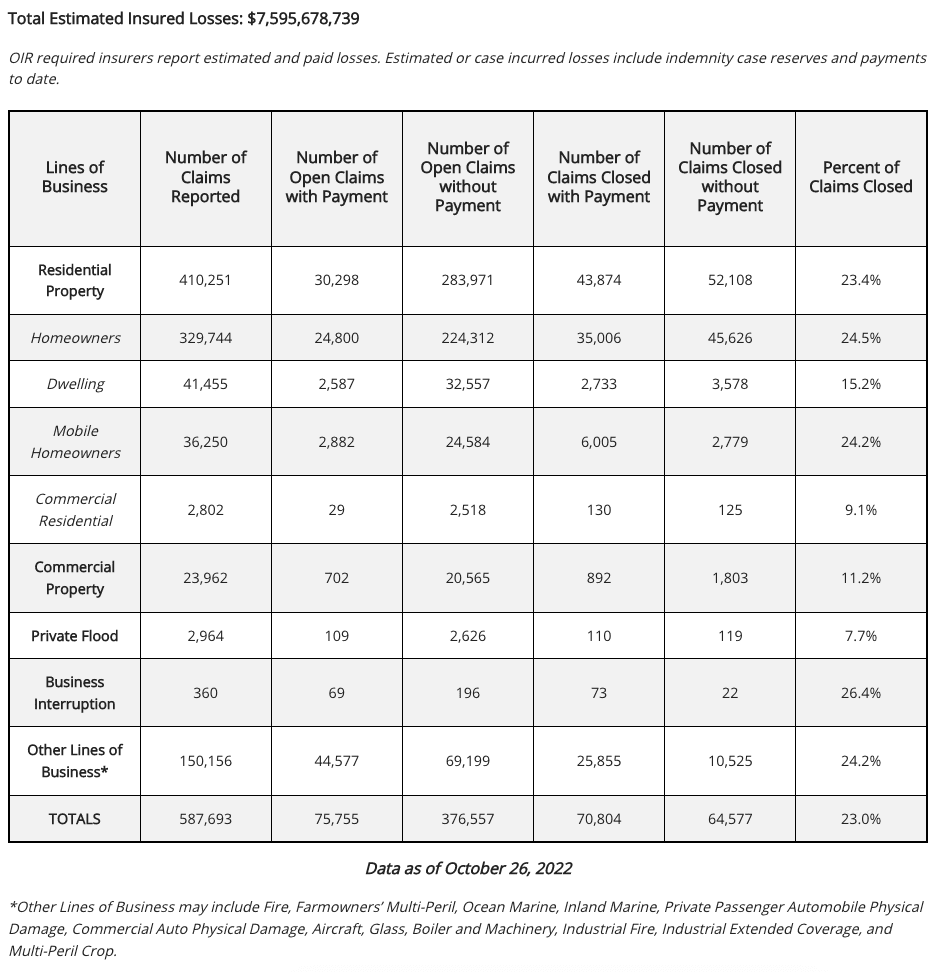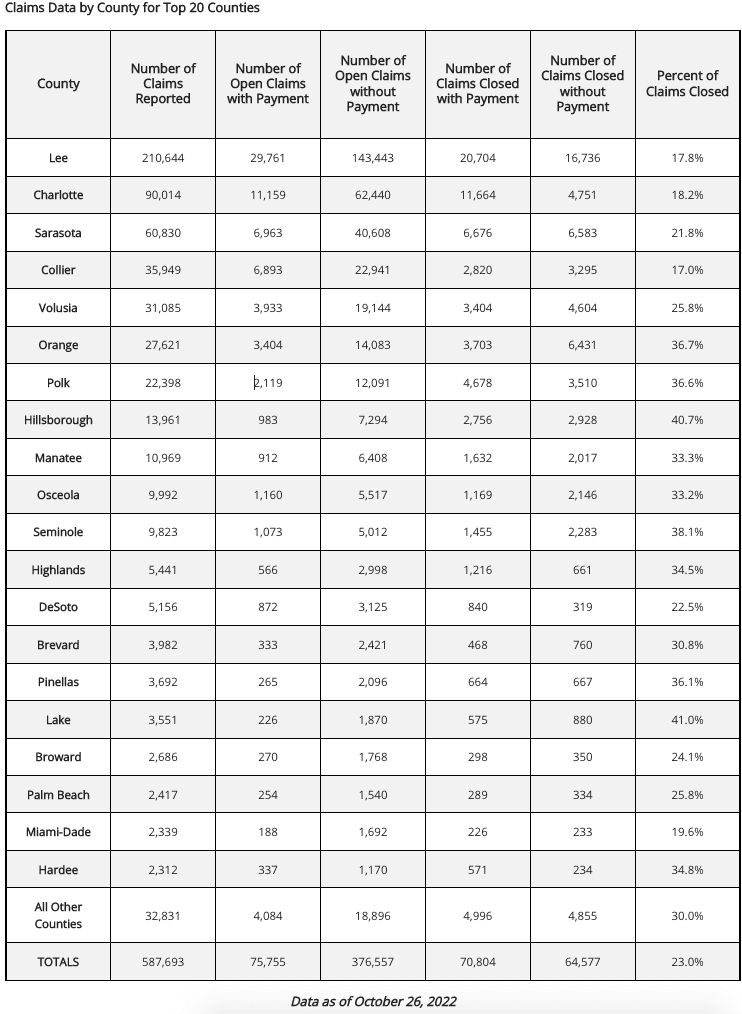Feeling frustrated and confused about your insurance? Knowing the basics before hiring contractors is vital

There are so many questions that deserve solid answers when it comes to insurance claims regarding Hurricane Ian. If you have never had to file a claim before it can be a daunting process, and while some are paid out smooth as butter, most are not. There are many glitches that can occur, so remembering a few easy steps can help.
While we are already weeks out from when Hurricane Ian hit, contacting your insurance agent as soon as possible is imperative. Make sure they have your best contact number and that you brush up on all of the coverage you have. Keep records of every time you speak with someone regarding your claim, date and time, whether it’s your adjuster, your agent or a contractor. If you need immediate temporary lodging, make that your priority. Take photographs, video and document every bit of personal property that was damaged. Try to include the date of purchase, any receipts you have and replacement value. Do not make any repairs prior to an insurance inspection and an agreement from your insurance agent or adjuster that they will be covered (unless, of course, you don’t mind paying them out of pocket). Finally, always do your best to remediate any further damage to your home by sealing broken windows, tarping your roof and/or contacting a mold specialist to dry out your home. These are things that can be done prior to an initial conversation with your insurance people if you cannot reach them.
One of the biggest questions is about private adjusters. These are insurance savvy people who work in your behalf – and quite often very diligently – to get your claim settled expediently. They usually get 10 percent of the insurance claim money in exchange for their services, and that in itself turns a lot of people off. However, the insurance game is not a cut-and-dried business. If you can make it through your policy jacket without having questions about what it means (read further down for more on that), you quite often will have to go back and forth with the company to get a check for the amount that you need … not the amount they think you deserve. If your insurance company has sent you anything, or told you over the phone, that you should never deal with a public adjuster, immediately start double-checking your dealings with them.
You should normally wait until you get your first check from the insurance company before you hire the adjuster, but there is one thing you need to remember at that point. Some insurance companies will want you to sign a release for that check, which shouldn’t be necessary. Make sure you find a qualified person to speak with about the document prior to signing it, as it could be worded in a way that would indicate you were happy with the amount of your first check, and you would not receive others. In other words, it could finalize your claim, and you don’t want that.
There are lots of referrals floating around on social media about public adjusters, so listen to your neighbors and others whose opinion you respect, then do your own research before hiring one. You can also call The Florida State Assistance Information Line, which has been activated to provide an additional resource for Floridians to receive up-to-date information regarding Hurricane Ian. The number for this toll-free hotline (800) 342-3557.
Another question that many homeowners have to ask is about the Assignment of Benefits. This is a document that the policyholder can sign that allows a company – such as a roofer or a plumber – to seek their own payment from the insurance company. It means that if you sign an AOB, you are allowing the companies that work for you to stand in your place and seek their payment directly.
This means that if the insurance company isn’t willing to pay the amount the contractor is asking, particularly on work that is already done, a lawsuit could be filed by the contractor against the insurance company. In the past, abuses of the AOB by both sides have driven up costs of insurance for homeowners.
Remember that you are never required to sign an AOB. Any contractor that seems upset or doesn’t want to do business with you because you won’t sign one should be avoided. If you decide you want to control the entire process by filing the claim yourself, that is entirely within your right.
Be very careful what you sign when you come to strike a deal with a contractor. If it appears to contain an AOB and you aren’t prepared to sign your rights over to the contractor, do not sign it. Never sign an AOB if there are blank spaces on the document that can be filled in later, if you haven’t talked to your adjuster about the ramifications of signing an AOB, if you haven’t researched whether the contractor in question has a partnership with any insurance companies and whether you are restricted by your insurance policy from signing an AOB in the first place.
An AOB must contain certain language or it is null and void. If you are contemplating signing one, talk to your insurance company about what verbiage must be included.
While you can cancel an AOB, it must be done with a signed, written document within 14 days of the signing of the AOB, at least 30 days after the date the contractor is scheduled to start work (if the company has already started the job) or at least 30 days after the creation and execution of the AOB, if the document does not have a start date for the job and a substantial amount of work has not yet been completed.
You might have heard these words uttered by your insurance agent, and while you may have thought you knew what it meant, it is important that you are clear about what it means.
“Wind-driven rain.”
Wind-driven rain is an insurance term used to describe any rain that is propelled into a covered property by the wind. Policies that cover storm damage often cover damage done by rain and damage done by wind separately. However, the two are likely to combine during a storm, making it difficult to tell when a wind-driven rain exclusion may apply. In most cases, wind-driven rain will not enter a structure unless there is a fault or defect that allows the rain to enter. Wind-driven rain exclusions may be included in many different policies, including home insurance, commercial insurance and flood insurance with the National Flood Insurance Program. Most of these exclusions do not apply to an event such as Hurricane Ian, as there are few insurance adjusters out there who don’t realize that Ian was a very strong storm that did a lot of damage to roofs and windows.
Claims regarding wind-driven rain are often denied because the insurance company will tell the homeowner they are not responsible for paying a claim on a house in disrepair. For instance, if you have water damage because your windows needed to be replaced or your roof tiles were missing, you will more than likely be denied payment.
The National Flood Insurance Program policy on this matter plainly states, “any rain that enters through a wind-damaged window or door, or comes through a hole in a wall or roof, the NFIP considers the resulting puddles and damage to be windstorm-related, not flood related.”
Most insurance help sites will tell you to “read the policy carefully” when it comes to an AOB, or to any other part of a claim. But what if you run across language you don’t understand (and most policies now are filled with “legalese” that can prevent you from fully comprehending your policy’s true meaning) it is your obligation to pursue any means possible to make sure the contents are fully known to you.
Some insurance representatives are finding out that even they don’t quite understand some of the jargon presented in today’s insurance policy jackets.
Going back to the wind-driven rain confusion, some insurance companies will try to dispute a claim through the use of exclusions. The term should be clearly defined within an insurance policy, but the use of ambiguous language can be used to the company’s advantage.
One local insurance representative said things are much different now than they were 10 or 15 years ago. She said it used to be much easier to pick up the phone, ask a question and get a simple answer.
“I used to be able to call a company, ask if something was covered in whatever situation and get a simple ‘yes’ or ‘no’ answer,” she said. “There are no easy answers to anything anymore. When someone says, ‘Just read your policy jacket, ‘ they make something that is very confusing sound very easy. I’ve read them for every company we carry, and none of them are easy to read. You usually wish you had a law degree when you try to interpret them.”
Don’t be discouraged – it is important to follow through on your points of confusion until you have the answers you need.










